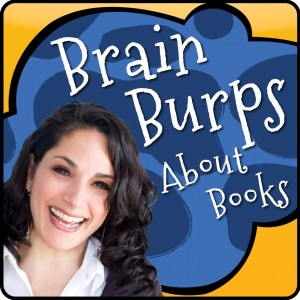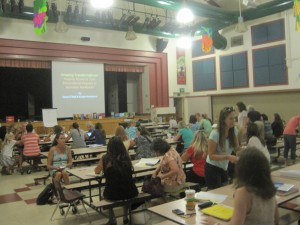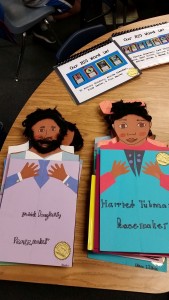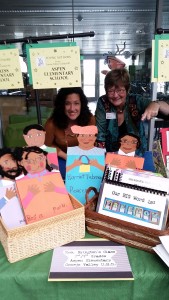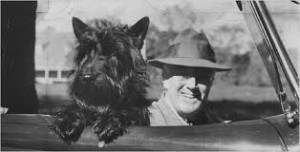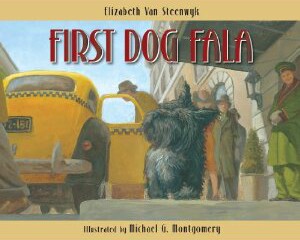Guest Post by Joanne Rocklin
“While I’d been gone . . . kids had been born who’d actually never seen an old-fashioned slide projector! I was riddled with anxiety.”
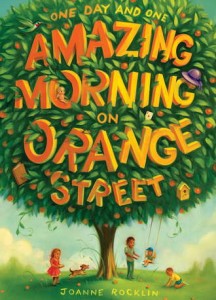 I hadn’t published for a few years, but if you love writing and it’s one of the few things you do well, eventually you go back to it. The good news is, I did sell three novels. The bad news is, I had to completely revamp my school presentations to include my new work.
I hadn’t published for a few years, but if you love writing and it’s one of the few things you do well, eventually you go back to it. The good news is, I did sell three novels. The bad news is, I had to completely revamp my school presentations to include my new work.
While I’d been gone, school visits, it seemed to me, had morphed into productions involving a great deal of new technical wizardry. Kids had been born who’d actually never seen an old-fashioned slide projector! I was riddled with anxiety. So I spent one happy afternoon reading old posts on the SchoolVisitExperts.com site (an activity I highly recommend) and I began to feel much more confident. Certain posts and topics were especially important to me:
Tips on Crowd Control
For some reason I’d forgotten that I’d spent a large part of my life as a school teacher, clinical psychologist and parent. Reading old posts, I was reminded that kids themselves haven’t changed. Crowd control is just a matter of knowing the right tricks –humor, a well-placed pause, signals, and some clever, pointed questions to chatty kids help a lot.
Ideas for Great Beginnings
I went straight to the “Great Beginnings” post in the archives–it’s terrific. It was a reminder to 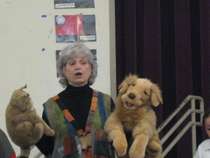 me that openings set the mood and the stage. The beginning of the presentation should be engaging, and most importantly, show that you yourself are glad to be there. Some authors begin with a song, some with humor, some with visuals, or costumes, some with intriguing questions. What this post made me realize was that I already had a great beginning – why was I throwing the baby out with the bath water? Or in this case, the silly cat puppet who had problems with his own writer’s block, a puppet that kids have always loved, no matter what their ages.
me that openings set the mood and the stage. The beginning of the presentation should be engaging, and most importantly, show that you yourself are glad to be there. Some authors begin with a song, some with humor, some with visuals, or costumes, some with intriguing questions. What this post made me realize was that I already had a great beginning – why was I throwing the baby out with the bath water? Or in this case, the silly cat puppet who had problems with his own writer’s block, a puppet that kids have always loved, no matter what their ages.
Lessons on “Shaping the Presentation”
 Here was the post written just for me, and all other authors who are invited to visit schools but need to be reminded why. Why do we do school visits? Because we are authors! We have lots to say about our books, about our day, about our desks, our pets, our childhoods and about those secrets we’re really excited to share. And here’s the phrase I needed to read: “. . .if you’re not a wizard at PowerPoint”…(Yes! Yes! That’s me!) and then the article goes on to enumerate all the other ways to make my presentation exciting without fancy-schmancy technology: use props, interact with the kids, think of the presentation itself as a story with a great beginning, an interesting middle, and a definite ending. I could do that!
Here was the post written just for me, and all other authors who are invited to visit schools but need to be reminded why. Why do we do school visits? Because we are authors! We have lots to say about our books, about our day, about our desks, our pets, our childhoods and about those secrets we’re really excited to share. And here’s the phrase I needed to read: “. . .if you’re not a wizard at PowerPoint”…(Yes! Yes! That’s me!) and then the article goes on to enumerate all the other ways to make my presentation exciting without fancy-schmancy technology: use props, interact with the kids, think of the presentation itself as a story with a great beginning, an interesting middle, and a definite ending. I could do that!
Then a funny thing happened on the way to my school visits. I outlined everything I wanted to do and say. I streamlined my old school presentation and shaped it all like a story. I yak about how my pets have helped improved my writing, interspersed with student participation and the use of props and my trusty cat puppet.
Relieved of the burden of “having” to use the new technology, I decided to trot over to the Apple store to learn how to fool around with the new Keynote software. Just, well, just because. Just because it didn’t matter as much anymore. And, just for fun. And it was! I fell in love. I am now an official Geek, the proud possessor of a presentation with a certain amount of bells and whistles and music and, yes, piped-in cat yowls. I may have overdone it, but as I said, it was fun. And hopefully, if I’m having fun, so will the kids.
Thanks, Alexis!
Disclaimer: Let me assure you that Alexis O’Neill did not pay me to say wonderful things about this site. I did offer to mail her a brisket pot roast but she refused; that’s how much integrity she has. Or maybe she’s a vegetarian…
 JOANNE ROCKLIN is the author of middle grade novels and early readers. Her novel The Five Lives Of Our Cat Zook won the 2013 SCBWI Golden Kite for Fiction, and her novel, One Day and One Amazing Morning on Orange Street won numerous awards including the FOCAL Award from the Los Angeles Public Library and the California Library Association Beatty Award. Joanne has a doctorate in psychology and is a former elementary school teacher. For several years she taught a popular class in writing children’s books at UCLA Extension Writers’ Program. She gives presentations to schools, libraries, bookstores and other organizations. http://www.joannerocklin.com/
JOANNE ROCKLIN is the author of middle grade novels and early readers. Her novel The Five Lives Of Our Cat Zook won the 2013 SCBWI Golden Kite for Fiction, and her novel, One Day and One Amazing Morning on Orange Street won numerous awards including the FOCAL Award from the Los Angeles Public Library and the California Library Association Beatty Award. Joanne has a doctorate in psychology and is a former elementary school teacher. For several years she taught a popular class in writing children’s books at UCLA Extension Writers’ Program. She gives presentations to schools, libraries, bookstores and other organizations. http://www.joannerocklin.com/
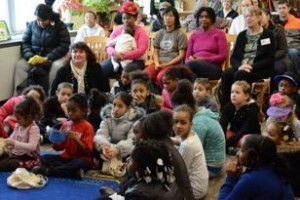 For years, various writing projects brought me to the New York State Museum on Madison Avenue in Albany, New York. Not once had I taken a left-hand turn onto Pearl Street on my way up the hill to the library. If I had, I would have bumped smack into Giffen Memorial Elementary School, a Title 1 school that is the largest in the city. Even still, from the outside, I wouldn’t have known Giffen’s juicy surprise: that it hosts a vibrant annual author visit program through a community partnership initiated by the First Presbyterian Church of Albany, New York.
For years, various writing projects brought me to the New York State Museum on Madison Avenue in Albany, New York. Not once had I taken a left-hand turn onto Pearl Street on my way up the hill to the library. If I had, I would have bumped smack into Giffen Memorial Elementary School, a Title 1 school that is the largest in the city. Even still, from the outside, I wouldn’t have known Giffen’s juicy surprise: that it hosts a vibrant annual author visit program through a community partnership initiated by the First Presbyterian Church of Albany, New York.
